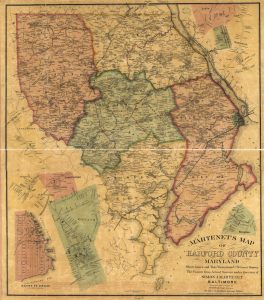
The town of Abingdon is one of the most seasoned in Harford County, having been laid out by the Paca family in 1779. It is arranged on the Old Post Road around two miles west of the previous area seat at Bush. William Paca, who was conceived in 1740 at Chilbery Hall, the old Paca family home, was an essential and persuasive subject who had much to do with the establishing of the early town. He later constructed Rose Hill in the little town and lived there for quite a long while.
John Paca did the real laying out of the town, and his plat is recorded in the area records at Bel Air. This plat of sixty-six parcels gives the names of the roads and the areas of the critical Building. Paca Street ran north and South and is presently known as Old Post Road, while Washington Street framed the intersection and prompts Otter Point. There were two inns, one on the Northeast corner of Paca and Washington Streets, and the other on the south side of Paca Street. Cokesbury College, constructed six years after the plat was made involved parts 28 to 42.
Abingdon was a remarkable town amid frontier days and turned out to be an assembling focus of note, as well as the home group of numerous nationals dynamic in business, government and legislative issues. Extensive landowners adjacent included Aquila Hall, George Bradford, and Richard Dallam. These men assumed a main part in the county’s part of the American Revolution.
As a focal point of industry, Abingdon in previous days likely outranked numerous other Harford towns. There were a few silversmiths, among the most noted of whom were Joseph Toy, Isaac Nicholas Toy and William Wilson. These lived and carried out their specialty for a long time after the establishing of Harford in 1773.
The primary silk cap production line in America was situated at the northwest corner of Washington and Paca Streets. It was understood from 1800 to 1820 for the assembling of high beaver caps, so stylish in that day.
The town additionally had a gunsmith shop, a stoneware, and three bureau making foundations. As cabinetmakers and funeral directors, the name McComas figured noticeably from the good ‘ol days. In 1808 John Clay McComas built up the business close to the focal point of town, and it has proceeded with effectively in the family through four eras.
The town was additionally an instructive and religious focus, having been chosen for the site of Cokesbury College, the first Methodist College in America. Two foundations added to the instructive eminence of the town. The Cokesbury Academy was under the ward of the school and proceeded for quite a long while after that foundation reached a grievous end.